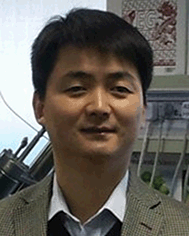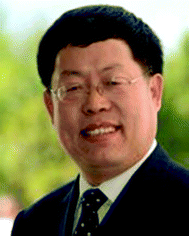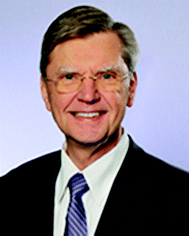Advances in solar energy conversion
Jinlong
Gong
 *a,
Can
Li
*b and
Michael R.
Wasielewski
*a,
Can
Li
*b and
Michael R.
Wasielewski
 *c
*c
aKey Laboratory for Green Chemical Technology of Ministry of Education, School of Chemical Engineering and Technology, Collaborative Innovation Center of Chemical Science and Engineering, Tianjin University, Tianjin 300072, China. E-mail: jlgong@tju.edu.cn
bState Key Laboratory of Catalysis, Dalian National Laboratory for Clean Energy, the Collaborative Innovation Center of Chemistry for Energy Materials (iChEM), Dalian Institute of Chemical Physics, Chinese Academy of Sciences, Zhongshan Road 457, Dalian 116023, China
cDepartment of Chemistry and Institute for Sustainability and Energy at Northwestern, Northwestern University, Evanston, Illinois 60208-3113, USA. E-mail: m-wasielewski@northwestern.edu
Abstract
Developing sustainable energy resources is one of the most urgent missions for human beings as increasing energy demand is in drastic conflict with limited global fossil fuels. Among the various types of sustainable energy resources, solar energy is considered to be promising due to its inexhaustible supply, universality, high capacity, and environmental friendliness. However, natural solar irradiation is decentralized, intermittent and fluctuates constantly. Therefore, effective utilization of solar energy in a clean, economic, and convenient way remains a grand challenge.
Solar energy can be utilized through photothermal, photovoltaic and photocatalytic approaches. Photoelectrochemical conversion of solar energy into chemical energy and fuels, by means of artificial photosynthesis and photocatalytic chemical synthesis, could realize the application of solar energy in a variety of fields. This themed issue on advances in solar energy conversion brings together experts in this field to describe current research and future prospects in this area. The topic of the issue focuses on, but is not limited to, the rational design, fabrication, and advanced characterization of components of photoconversion systems, materials, processes and technologies.
An early breakthrough in solar energy conversion came in the 1970s by Fujishima and Honda, who demonstrated that light energy can be used to split water into hydrogen and oxygen.1 Up to now, there are two major ways to carry out water splitting reactions directly utilizing solar energy; a particulate photocatalytic system (PC) and a photoelectrocatalytic (PEC) system.2 Water splitting based on particulate photocatalysts is an easily constructed and cost-effective technology for the conversion of abundant solar energy into clean and renewable hydrogen energy. The contribution by Domen et al. (DOI: 10.1039/C8CS00542G) summarizes the basics and recent developments of overall water splitting via both one-step excitation and Z-scheme processes systematically. Various strategies to improve the conversion efficiency, such as cocatalyst loading, surface morphology control, surface modification and surface phase junctions, are discussed intensively. Gong et al. (DOI: 10.1039/C8CS00711J) summarize water splitting reactions from the perspective of structural construction of the catalyst. The review describes the classification, synthesis, and formation mechanism of Yolk–shell (YS) structures and the strategies to improve photocatalytic performance based on YSs.
Compared to PC systems, PEC systems can apply an external bias to promote the separation of photogenerated electrons and holes.2 In the contribution by Lee et al. (DOI: 10.1039/C8CS00699G), the comparison of the above solar water splitting systems is shown. Based on the comparison, the focus of the review is then placed on a critical assessment of the key components needed to scale up PEC water splitting systems, including materials efficiency, stability, cell architecture, and techno-economic aspects of the systems. Among the various issues that limit the progress of PEC systems, the lack of photoelectrode materials with suitable properties is a key challenge, which has attracted tremendous research attention. The review by Wang et al. (DOI: 10.1039/C8CS00868J) summarizes efforts in the PEC area, with a comprehensive focus on materials-related considerations. Issues discussed in the review include synthesis, optoelectronic properties, charge behaviors and catalysis. Reviews of several specific photoelectrode materials are also included in this special issue. Choi et al. (DOI: 10.1039/C8CS00761F) review the recent progress made on the development of ternary oxide-based photoanodes and outline the important characteristics to analyze when evaluating photoanodes. In addition, current status and prospects of single-crystal Si-based photoelectrodes in PEC water splitting for hydrogen production are reviewed by Gong et al. (DOI: 10.1039/C8CS00638E).
Another strategy for solar energy conversion is to utilize the protons and electrons from water oxidation,3 or directly use the hydrogen gas,4 for the reduction of CO2 to carbon-based fuels.
The contribution by Armstrong et al. (DOI: 10.1039/C8CS00546J) explains the reasons for using enzymes as tools for solar fuels research. Examples include efficient and selective electrocatalytic reduction of CO2 to formate or CO, water oxidation, O2 reduction and so on. Since enzymes exist only in nature, in order to mimic the behavior of enzymes in natural photosynthesis as much as possible, various molecular catalysts have been synthesized for artificial photosynthesis. In this special issue, Sun et al. (DOI: 10.1039/C8CS00897C) summarize the development history of molecular catalysts, and the fundamental and application of artificial photosynthesis including molecular catalysts for water oxidation, proton reduction, CO2 reduction and molecular-catalysts-based artificial photosynthesis devices. The advantages, challenges, and stability of molecular catalysts were also discussed. While many studies have been done in artificial photosynthesis, especially the study of molecular catalysts, the design and understanding of artificial photosynthetic systems is likely to be more effective when experiments and theoretical calculations are combined in a collaborative framework. Therefore, in the review by Brudvig et al. (DOI: 10.1039/C8CS00819A), they introduce strategies for collaboration between experiment and theory in detail, including the mechanism of interfacial electron transfer and ruthenium-based catalysts. In the review by Zhang et al. (DOI: 10.1039/C8CS00607E), recent advances in the solar-driven COx hydrogenation to hydrocarbons over 2D-based materials are showcased. Optimization strategies of 2D catalyst performance, like catalyst electronic structure manipulation and morphology control, surface/interface engineering, reactor engineering and density functional theory modelling studies, are also discussed in this review.
Yet another approach to the conversion of solar energy is to utilize photovoltaics or photothermal transduction agents (PTAs) to generate electrical or thermal power. Over the last few years, inorganic–organic hybrid perovskites have shown dramatic improvements in photovoltaic performance and device stability. In the review by Seok et al. (DOI: 10.1039/C8CS00656C), some perspectives on achieving high-performance perovskite solar cells with long-term device stability through precisely controlled nucleation and crystal growth in precursor solution are provided. Fundamental background knowledge of nucleation and crystal growth processes in solution are also described. Photothermal therapy (PTT) or photoacoustic imaging (PAI) has been intensively investigated for the treatment and diagnosis of cancer, respectively. Chen et al. (DOI: 10.1039/C8CS00618K) review the development of inorganic and organic nano PTAs and strategies for improving PTT outcomes. The perspectives and challenges of PTT and PAI for combating cancer, especially regarding their clinical translation, are also discussed.
In summary, practical applications of solar energy conversion inspired by natural photosynthesis requires further science and technology advances, yet holds considerable promise.2 With the breakthrough of key technologies such as those described in this special issue, the utilization of solar energy will become a reality and may provide a sustainable lifestyle for human beings in the future.
References
- A. Fujishima and K. Honda, Nature, 1972, 238, 37–38 CrossRef CAS PubMed.
- X. Chang, T. Wang and J. Gong, Energy Environ. Sci., 2016, 9, 2177–2196 RSC.
- P. Strasser, M. Gliech, S. Kuehl and T. Moeller, Chem. Soc. Rev., 2018, 47, 715–735 RSC.
- (a) J. Jia, C. Qian, Y. Dong, Y. F. Li, H. Wang, M. Ghoussoub, K. T. Butler, A. Walsh and G. A. Ozin, Chem. Soc. Rev., 2017, 46, 4631–4644 RSC; (b) J. J. Wang, G. N. Li, Z. L. Li, C. Z. Tang, Z. C. Feng, H. Y. An, H. L. Liu, T. F. Liu and C. Li, Sci. Adv., 2017, 3, e1701290 CrossRef PubMed.
| This journal is © The Royal Society of Chemistry 2019 |



